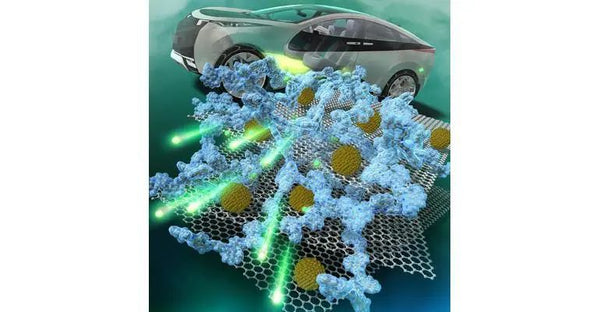Adding polymer binders to silicon electrodes can improve the stability of lithium-ion batteries.
Japanese researchers say their improved design of silicon anodes for lithium-ion batteries could improve the overall lifespan of high-energy-density batteries, which could address some of the limitations currently associated with energy storage batteries.
Scientists from the Japan Institute of Advanced Science and Technology (JAIST) have demonstrated that adding a special polymer composite binder to silicon anodes for lithium-ion batteries can significantly improve the stability of the structure. This allows batteries made with anodes made from this material to last longer and therefore be able to meet the growing energy demands of electric vehicles and other devices.
Lithium-ion batteries have been the default for most of the devices we use for years, but their limitations have become apparent, especially in electric vehicles, which require more durability, energy density and overall life.
Researchers have been looking for alternative materials for these batteries, and using silicon instead of graphite as the anode is one of the solutions they've been looking for. This is because silicon is more abundant, cheaper, and has a higher theoretical discharge capacity than graphite.
However, silicon anodes also suffer from drawbacks; in particular, repeated charging and discharging can cause expansion and rupture of silicon particles, resulting in the formation of a thick solid-state electrolyte interface (SEI) between the electrolyte and the anode. The thick solid-state electrolyte interface restricts the movement of lithium ions in the electrode, which in turn limits the performance of the battery and its ability to charge and discharge over time.
 adhesive application
adhesive application
In order to improve the performance of silicon anodes for lithium-ion batteries, a research team led by Professor Noriyoshi Matsumi has developed a method to improve the stability of anode silicon particles using a polymer composite binder.
This creates a solid-electrolyte interface that prevents the anode and electrolyte from spontaneously interacting with each other, but does not inhibit lithium ion flow, the researchers say.
Specifically, the researchers used polydiiminobenzonaphthoquinone (P-BIAN) and the carboxylate-containing polymer poly(acrylic acid) (PAA) in a composite adhesive, linked together by hydrogen bonding .
The design, which consists of n-type conducting polymers (CPs) and proton-donating polymers with hydrogen-bonding networks, represents "a promising future for high-capacity electrode materials," Matsumi stated in the press release.
In fact, the composite polymer structure holds the silicon particles together and prevents them from breaking, while hydrogen bonds allow the structure to repair itself. This means that if the polymers break or degrade, they can reattach, the researchers said.
They added that the binder also improved the conductivity of the anode while maintaining a thin SEI by limiting the electrolytic decomposition of the electrolyte.
improve anode
To test the binder, the team fabricated an anode half-cell composed of graphite-containing silicon nanoparticles (Si/C), a binder (P-BIAN/PAA), and an acetylene black (AB) conductive additive composition. Then, they subjected the Si/C/(P-BIAN/PAA)/AB anode to repeated charge-discharge cycles.
During the process, the binder stabilized the silicon anode to maintain a discharge capacity of 2,100 mAh/g after more than 600 cycles, the researchers published their working paper in the journal ACS Applied Energy Materials. Instead, the capacity of the bare silicon carbon anode dropped to 600 mAh/g in 90 cycles, they said.
After testing the anodes, the research team disassembled them and examined them with spectrometers and microscopes, looking for any cracks that might have occurred due to silicon cracking, which is common in these anodes. The researchers found that after 400 cycles, the anode maintained a smooth structure with only a few microcracks. This suggests that the binder successfully improved the structural integrity of the electrodes, they said.
Matsumi said the findings overall demonstrate a promising future for silicon anodes in lithium-ion batteries, which could be optimized for use in electric vehicles and other battery-powered vehicles, such as high-performance drones.

